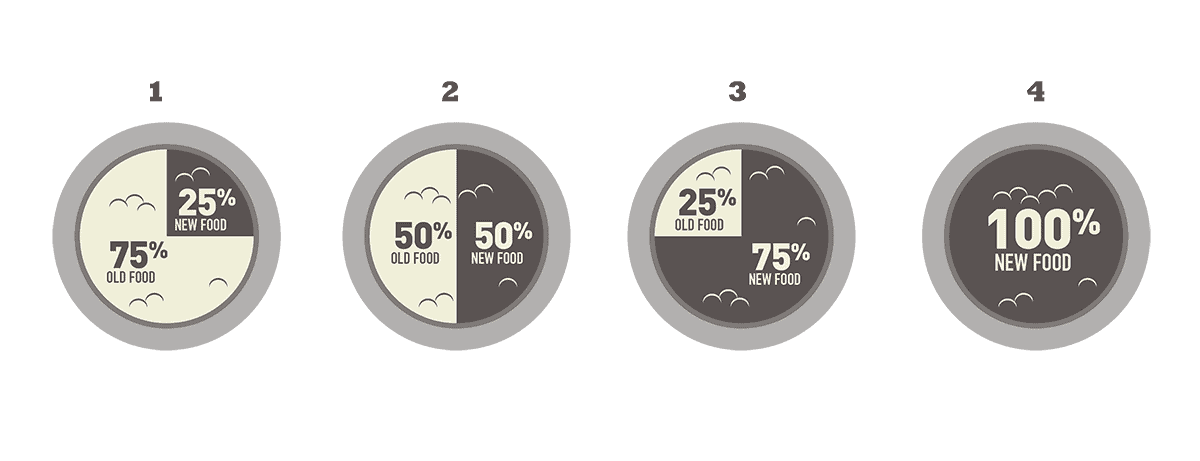FAQ: Pet Food Questions Answered
As Pet Lovers ourselves, we understand that peace of mind is paramount. That’s why we strive to answer any questions you might have about our ACANA foods. Check out our Frequently Asked Questions to learn everything you need to know about our Biologically Appropriate foods!
Have a question you don’t see here or just want to chat about our foods and how they are made? Please contact our Customer Care Team and we’ll be happy to help!
Our ACANA Foods
ACANA foods are a celebration of our longstanding commitment to making Biologically Appropriate foods from the World’s Best Ingredients. Rich in meat protein, ACANA foods feature 50-75% quality animal ingredients.
ACANA foods offer a taste experience your dogs and cats will love!
Q. HOW CAN I FIND AN ACANA RETAILER?
Our online store locator will help you locate retailers in your area.
Q. DO YOU OFFER A BREEDER PROGRAM?
If you are a registered breeder in the UK mainland, we do offer a Breeder Program. Contact us to find out more about our Breeder Program.
Q. HOW DO I TRANSITION MY PET TO ACANA FOODS?
Dogs and cats are often fed the same food for a long period of time, which means a sudden food change makes it difficult for their digestive systems to adapt. That’s why it’s important to introduce new food gradually. Going slowly will give your dog or cat time to adjust to their new food and will also reduce the chances of digestive upset. Start by mixing 25 percent new food with 75 percent old food. Slowly increase the new food proportionately over the next 10-14 days until you are feeding 100 percent new food.

Q. WHICH ACANA DIET SHOULD I CHOOSE?
The first time you transition your dog or cat to ACANA, we recommend selecting a recipe with a meat-type that matches the food you are currently feeding. This will help allow for the easiest transition and also minimize the risk of gastrointestinal upset. For example, if your dog is currently on a poultry-based diet, you may want to try the ACANA Prairie Poultry or Wild Prairie.
It is also important to consider the life stage of your pet. The good news is that the vast majority of our foods are formulated for All Life Stages, as recommended by FEDIAF. This means that you can start feeding these diets to puppies or kittens, right from when they are first introduced to kibble at around 3-4 weeks old. Our All Life Stages diets also meet all the nutritional needs for senior pets.
For more specific dietary needs, please contact our Customer Care department.
Q. WHAT IS A ROTATIONAL DIET? CAN I DO THIS WITH ACANA?
After initially transitioning to ACANA, what many Pet Lovers do is a method of feeding known as Rotational Feeding. Rotating between ACANA formulas prevents your dog or cat from getting tired of eating the same thing day in and day out, while offering them a great variety of proteins and fats. A good place to start is rotating by the bag – when you have finished one formula, your next bag will be a different recipe. The first time you introduce a new food for rotation, mix the food 50/50 just to make sure your pet transitions well to the new ACANA food. However, if your dog or cat is more diet-sensitive, do a full transition when introducing a new ACANA food – after that you can change at will.
Q. DO YOU HAVE ANY FEEDING TIPS?
Feed according to your dog or cat’s size, breed and stage of life. Consider that puppies and kittens require up to twice the energy of full-grown pets, and that overweight and senior pets often need smaller meals – just like people!
We recommend that for most pets, you feed twice daily. Simply divide the amount suggested on the feeding guide into two meals, spaced eight to 12 hours apart. For example, if the feeding guide calls for 100g per day, we recommend feeding 50g in the morning and 50g at night. You may need to adjust portions as you learn your pet’s ideal daily “maintenance” amount. These amounts may change over time as your pet ages. Always keep in mind that a lean dog or cat is a healthy pet.
Many dogs and cats have large appetites and will eat everything you feed them. As ACANA foods are highly palatable, you need to be careful not to overfeed, as this can cause issues such as loose stool or unwanted weight gain.
Q. HOW MANY TREATS SHOULD I FEED?
We all love to give our pets treats. However, treats should be given in moderation and should represent 10% or less of your pet’s daily food intake. The rest should come from a nutritionally complete feeding program. When using treats frequently, such as during training exercises, try to use small pieces.
Q. WHAT DOES BIOLOGICALLY APPROPRIATE MEAN?
The Biologically Appropriate concept is simple: mirror the freshness and variety of meats that dogs and cats are evolved to eat.
Q. WHAT IS MEATMATH?
MeatMath is designed to help you assess if your food is Biologically Appropriate. Biologically Appropriate foods are formulated to match the eating anatomy of the animal they are intended for. Dogs and cats are evolved as carnivores, which means they require high concentrations of meat, high inclusions of fresh meat, and a rich diversity of meat.
Is your food Biologically Appropriate?
Answer the three meat questions: How Much? How Fresh? How Many?
- How much meat is in the total diet? ACANA contains 50-75%* animal ingredients
- How much fresh or raw meat is in the total diet? ACANA contains 1/3 – 1/2 fresh or raw meat
- How many meats are included in the diet? Each ACANA recipe contains 1-5 different meats
*Approximate and derived from the unprocessed state of the ingredients.
Q. WHAT DOES WHOLEPREY MEAN?
Nature matched the nutrients in whole animals to perfectly meet your dog or cat’s biological needs. ACANA WholePrey ingredients incorporate meats, organs, and cartilage to reflect the natural diet, eliminating the need for long lists of synthetic ingredients.
Q. WHERE DO YOU SOURCE YOUR INGREDIENTS?
We believe that making the world’s best pet foods requires using the world’s finest ingredients. With this in mind, we focus on working with suppliers that we know and trust. Trust is earned by demonstrating an ongoing commitment to quality, food safety, sustainability, and communication.
Q. WHY DO YOU USE PEAS, BEANS, AND LENTILS IN YOUR FOODS?
Our fruit and vegetable inclusions provide natural sources of fiber, vitamins, and minerals, while also providing the binding action needed to form a kibble. Our legume inclusions are a healthy source of fiber and soluble carbohydrates.
Q. FRESH, RAW OR DRIED – WHAT’S THE DIFFERENCE?
FRESH: For our fresh meats refrigeration is the only method of preservation.
RAW: Our raw ingredients are the same as our fresh, but frozen at peak season of freshness to preserve nutrients.
DRIED: Dried fish, meat and poultry ingredients are made of flesh, bones and cartilage, and provide a concentrated source of protein, with their bone content providing a very rich source of minerals. Dried ingredients are made by removing water from the meat, bone, and cartilage ingredients through a cooking process.
Q. TELL ME ABOUT YOUR FOOD SAFETY
Built to reflect our commitment to Pet Lovers everywhere, NorthStar kitchen has achieved the internationally recognized Safe Feed/Safe Food (SFSF) and HACCP certifications. Our NorthStar and New NorthStar Kitchen are also one of very few North American pet food facilities that is European Union certified.
Our track-and-trace system tracks ingredients throughout our kitchens at each step in the process. All of this information is stored in databases that link to a finished product lot code, which enables trace back to an individual ingredient supplier or any step within our kitchens’ processes.
Our NorthStar kitchen has a comprehensive, industry-leading Food Safety System including a HACCP (Hazard Analysis and Critical Control Points) program, and our kitchen follows very strict GMPs (Good Manufacturing Practices) to ensure that our foods are made to the highest standards.
Our Quality Assurance department follows testing protocols from the time ingredients enter our kitchen through production and packaging. Our Quality Assurance technicians sample the raw, in-process and finished products according to our risk-based and scientifically-sound protocols. All finished products are subjected to pathogen evaluation before release and shipment. No product is released for shipment until all tests for food safety and quality are confirmed to be favorable.
Q. STORING YOUR ACANA FOOD
Once opened, you can safely store ACANA food in its packaging by rolling the top of the bag down after each use. If you live in a humid climate, consider using an airtight container and simply put the entire bag of food in the container. Remember to wash your storage bin whenever you change out your bag of food to ensure that food buildup does not occur. Also remember to keep the lot number handy. You can find this information, as well as the Best Before date, on the back of the package near the top. Refrigeration of ACANA is not required. Rather than a garage with large temperature fluctuations, the best storage is in your home in a cool, dry place at room temperature.
Q. BEST BEFORE DATES
The Best Before (BB) date is printed on the back of the bag at the top of the ACANA package along with our lot number and production information. Our BB dates should be read Day, Month, Year.
Q. ARE ACANA BAGS RECYCLABLE?
At present, our packaging is not recyclable in most areas. Due to the nature of our foods, our bags need to form a complete barrier to protect your pet’s food from the outside environment. We know sustainable packaging is important to Pet Lover’s and as such, we are working towards a solution. We will continue to explore these opportunities to provide you and your pets with the best Biologically Appropriate foods possible.
Q. WHAT IS FEDIAF?
FEDIAF is the trade body that represents the European pet food industry. As we do export our ACANA diets to Europe, we follow FEDIAF nutritional recommendations for dogs and cats to ensure that our diets are complete and balanced.
For more information or if you have questions about your pet’s specific nutritional requirements, please use the contact us page so our nutrition team may get in touch.


